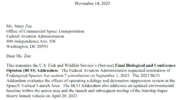And

The issue @JB47394 mentions aside, they've gotten darn quick at it:At this point they've gotten good and fast enough at it, they can probably carve out 45 minutes out that morning, and get it stacked up and ready...



